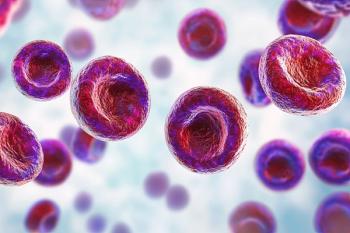
HPV Immunization Program Shown to Reduce Cervical Precancer Rates Among Women by More Than Half
An August study reveals that a school-based human papillomavirus (HPV) immunization program attributed to a dramatic reduction of cervical precancer rates among women living in British Columbia, Canada.
An August study published in the Journal of Infectious Diseases reveals that a school-based human papillomavirus (HPV) immunization program was credited with a 57.9% reduction of cervical precancer rates among women living in British Columbia (BC), Canada.
Researchers from BC Cancer, the BC Center for Disease Control, BC Women’s and Health Center, and the University of British Columbia (UBC) jointly investigated the impact of a school-based HPV immunization program on the development of cervical precancers in women. These precancers serve as an abnormal cell growth in the cervix often discovered during routine Pap tests, which left untreated, can cause cervical cancer.
Data for the study was derived from provincial cervical screening records and immunization registries containing precancerous outcomes for unvaccinated and HPV-vaccinated women born from 1994 to 2005. Incidence rate (IR), relative rate (RR), and vaccine effectiveness (VE) were compared across vaccination groups:
- IR, RR, and VE measured using unadjusted and adjusted Poisson regression of cytology (HSIL) and histopathology (CIN2, CIN3, CIN2+) outcomes
- Women who had completed a series of HPV vaccinations on schedule between the age of 9 to 14 were compared to unvaccinated women of the same age
Study results showed that for women receiving vaccinations, adjusted RR compared to unvaccinated women over 7 years of follow-up was 0.42 (95% CI, 0.31-0.57; CIN2+), indicating a VE of 57.9% (95% CI; 43.2%-69.0%) in reducing cervical pre-cancers. After adjusting RR for HSIL, RR raised to 0.53 (95% CI, 0.43-0.64), indicating a VE of 47.1% (95% CI, 35.6%-56.7%).
Senior research advisor Gina Ogilvie, MD, BC Women’s Hospital and Health Center and professor at the UBC School of Population and Public Health,
HPV vaccination has served as a key preventative measure for the numerous
Monika Naus, MD, medical director of Communicable Diseases and Immunization Service and professor at the UBC School of Population and Public Health, noted the longevity of the study and its invaluable effect on preventative treatment. “The HPV immunization program in BC is in its 12th year now, and it’s very gratifying to be able to show such positive outcomes through prevention of this infection and its complications in women,” said Naus.
The study authors stated that continued program evaluation is important for measuring long-term population impact.
Reference
Racey CS, Albert A, Donken R, et al. Cervical intraepithelial neoplasia rates in British Columbia Women. [published August 23, 2019]. J Infect Dis. doi: 10.1093/infdis/jiz422/5553681.
Newsletter
Stay ahead of policy, cost, and value—subscribe to AJMC for expert insights at the intersection of clinical care and health economics.







































